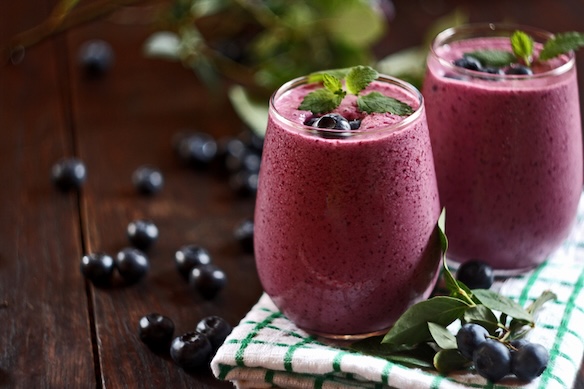Balancing blood sugar throughout the day isn’t just important for people living with diabetes—it can benefit anyone looking to maintain steady energy, improve focus, and avoid the dreaded afternoon crash. One of the most effective strategies for keeping glucose levels stable is choosing snacks with a low glycemic index (GI). These foods are digested and absorbed more slowly, helping to prevent sharp spikes and drops in blood sugar. In this article, we’ll explore what makes a snack low glycemic, why these foods matter for energy and health, provide a variety of snack ideas, and explain how tools like Evidation can help you stay on track.
What Makes a Snack Low Glycemic?
The glycemic index is a ranking system that measures how quickly a carbohydrate-containing food raises blood glucose levels.
The scale runs from 0 to 100:
- Low GI foods: 55 or less
- Medium GI foods: 56–69
- High GI foods: 70 or higher
Snacks that fall into the low GI range are digested more slowly, which results in a gradual release of glucose into the bloodstream. This slow and steady effect helps reduce rapid spikes and dips in blood sugar.
Factors That Influence Glycemic Index
Several factors determine whether a food will be low or high on the GI scale:
- Fiber content: High-fiber foods, such as fruits, vegetables, legumes, and whole grains, typically have lower GI values because fiber slows digestion.
- Fat and protein: Adding healthy fats or proteins to a carb-based food can lower its glycemic response by slowing absorption.
- Processing: Whole, minimally processed foods generally have a lower GI than refined or heavily processed options.
- Ripeness: For fruits, ripeness matters. A ripe banana has a higher GI than a slightly green one because its starches have converted to sugar.
- Cooking method: How a food is prepared affects its GI. For example, al dente pasta has a lower GI than soft, overcooked pasta.
The Difference Between GI and Glycemic Load
While the GI measures how quickly a food raises blood sugar, the glycemic load (GL) considers portion size as well. For example, watermelon has a high GI, but since it contains mostly water and relatively few carbohydrates per serving, its glycemic load is low. Both metrics are useful, but when it comes to snacks, focusing on low GI foods is a simple and effective guideline.
Benefits of Low Glycemic Snacks for Energy and Blood Sugar
Choosing snacks that are low on the GI scale offers multiple health benefits that extend beyond just stabilizing blood sugar. Low GI snacks provide a steady stream of fuel for your body and brain. This can help improve concentration, productivity, and mood—particularly in the afternoon when many people feel sluggish.
Low GI foods take longer to digest, they promote feelings of fullness and satiety. This can reduce overeating and help with long-term weight management goals. In addition, long-term, consistently high blood sugar is linked to insulin resistance, type 2 diabetes, and cardiovascular disease. Choosing low GI snacks helps lower your risk of these conditions by supporting better metabolic health.
If you work out, low GI snacks may support better performance. Athletes and people with active routines benefit from low GI foods because they provide long-lasting energy for workouts and recovery. Pre- or post-exercise, a low GI snack can prevent sudden fatigue and improve endurance.
Finally, choosing low GI snacks may improve your mood. Blood sugar fluctuations often contribute to irritability and cravings for sugary or processed foods. By keeping glucose levels steady, low GI snacks help reduce those sudden urges for quick-fix junk food.
Top Low Glycemic Snack Ideas
Now that we’ve covered the “why,” let’s look at the “what.” Here are some delicious and practical snack options that fall into the low glycemic category.
- Apple slices with nut butter: Apples are naturally high in fiber and have a moderate GI. Pairing them with almond or peanut butter adds protein and healthy fats, lowering the overall glycemic response while creating a satisfying balance of sweet and savory.
- Greek yogurt with berries: Plain, unsweetened Greek yogurt has a low GI, and berries like blueberries, strawberries, and raspberries add antioxidants, fiber, and natural sweetness without spiking blood sugar.
- Hummus with vegetables: Chickpeas, the main ingredient in hummus, are low GI and packed with protein and fiber. Pair hummus with raw vegetables like carrots, cucumbers, or bell peppers for a crunchy, nutrient-rich snack.
- Hard-boiled eggs and avocado: This protein- and fat-rich combo is naturally low in carbohydrates, making it an excellent low GI option. Avocado also provides fiber and heart-healthy monounsaturated fats.
- Mixed nuts and seeds: A handful of almonds, walnuts, pistachios, or pumpkin seeds provides protein, fiber, and healthy fats. Just be mindful of portion sizes since nuts are calorie-dense.
- Edamame: These young soybeans are rich in protein and fiber while maintaining a low GI. A sprinkle of sea salt or chili flakes adds extra flavor.
- Cottage cheese with tomato or cucumber: Cottage cheese has a low GI and pairs well with fresh vegetables for added crunch and nutrients.
- Whole grain crackers with cheese: Opt for minimally processed whole grain crackers paired with cheese. The combination of fiber, protein, and fat helps stabilize blood sugar.
- Chia seed pudding: Chia seeds are high in fiber and omega-3 fatty acids. When soaked in almond or oat milk overnight, they form a pudding-like consistency. Add cinnamon and a few berries for a delicious low-sugar dessert.
- Roasted chickpeas: Crispy roasted chickpeas are a fiber- and protein-packed alternative to chips. They’re portable, flavorful, and naturally low GI.
- Lentil or black bean soup: Although it’s not a traditional snack, a small serving of soup made with legumes can be a warming and satisfying option between meals.
- Vegetable wrap with whole wheat tortilla: Fill a whole wheat tortilla with spinach, cucumbers, avocado, and lean protein for a mini wrap that won’t spike your glucose levels.
- Dark chocolate with almonds: Choose dark chocolate (70% cacao or higher) in moderation. Pairing it with almonds helps balance the natural sugar content and adds healthy fats.
- Oatmeal energy bites: Made with rolled oats, flaxseed, and nut butter, these bite-sized snacks are portable, filling, and naturally low GI.
- Fresh pears or cherries: Both fruits have lower GI values compared to tropical fruits like pineapple or mango. Pair them with a small amount of protein, such as a cheese stick, for extra balance.
How Evidation Can Help You Regulate Your Blood Sugar and Feel Your Best
While choosing the right snacks is a powerful step toward better blood sugar management, tracking your habits and outcomes is equally important, and Evidation can help. Whether you're working to choose low GI foods, adopt a low-sugar diet, or you have another health goal, Evidation is here to support you.
The way Evidation works is simple. When you download the app, you'll be asked to share the health data that you're already tracking (like information from your wearable fitness tracker, nutrition tracking app, etc.). Evidation uses the information you provide to find patterns and provide you with actionable, personalized, content-based insights that can help you make healthy decisions that drive your health forward. Click here to learn more about Evidation and get started today.











